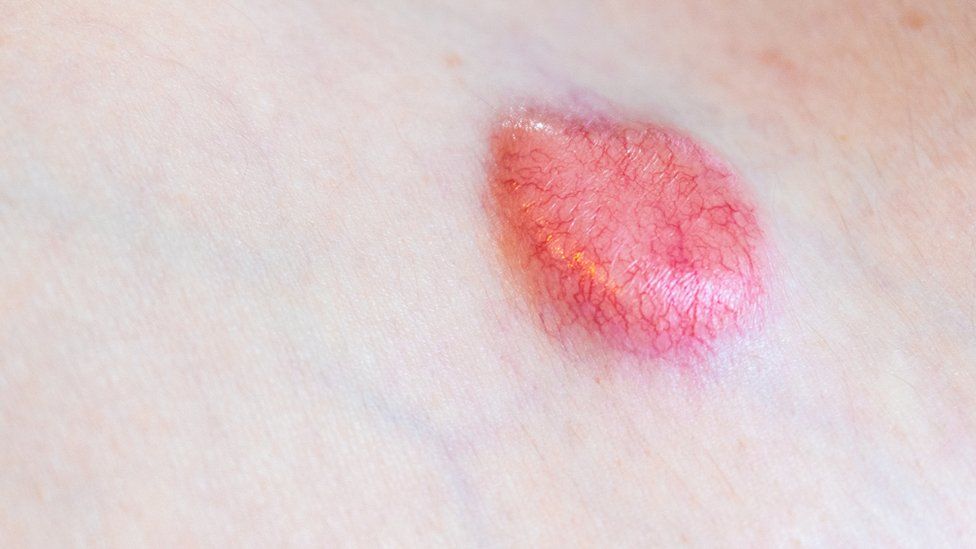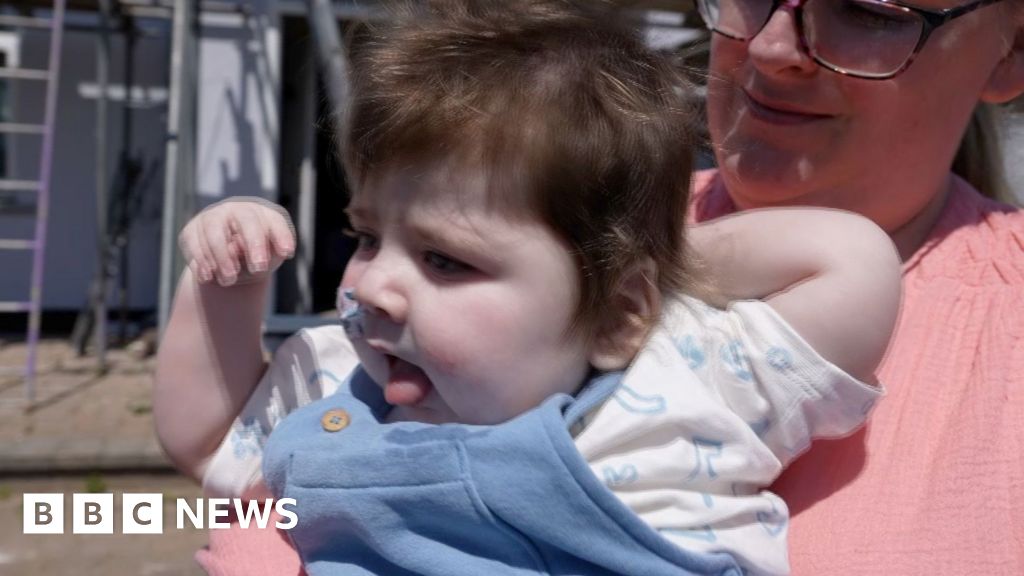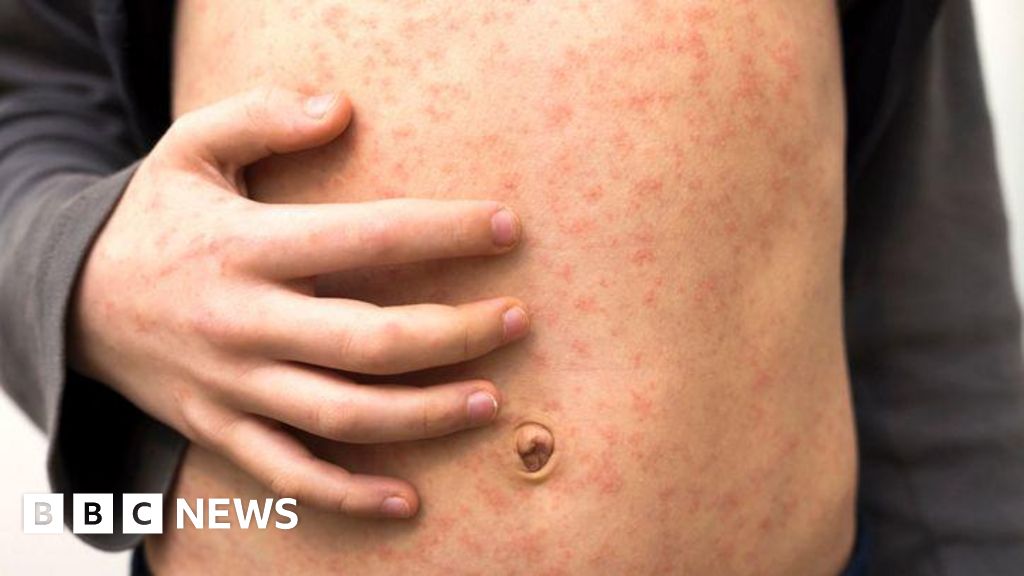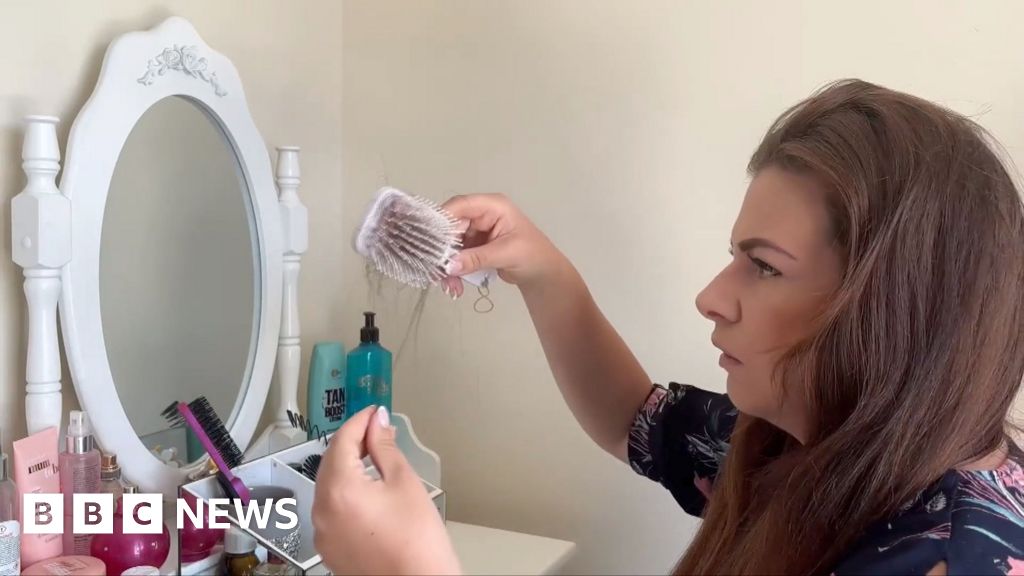ARTICLE AD BOX
 Image source, Getty Images
Image source, Getty Images
The first symptom is usually a lump or discoloured patch on the skin which slowly progresses
By Gareth Pennant
Newyddion BBC Cymru
The rise in non-melanoma skin cancer cases in Wales is very concerning, Public Health Wales has said.
Figures show a 7% increase over four years, with the rate the highest across the UK nations.
One woman said she was "shocked" by her cancer diagnosis, despite having spent a lot of time tanning in the sun.
The British Association of Dermatologists said the tanning "fashion" and fair skin were among the reasons for the high number of cases.
Non-melanoma skin cancer (NMSC) is the most common form of cancer in Wales, ahead of prostate cancer.
The name non-melanoma distinguishes more common types of skin cancer from the less common and potentially more serious type of the disease known as melanoma.
PHW figures show the number of NMSC cases increased by 7.1% between 2016 and 2019 - from 13,369 to 15,102.
Health experts said it was mainly caused by overexposure to ultraviolet (UV) light from the sun, as well as artificial sunbeds and sunlamps.
The first symptom is usually the appearance of a lump or discoloured patch on the skin which slowly progresses.
Unlike many other cancers, there is less risk that it will spread to other parts of the body.
Most cases can be treated successfully, with at least 90% of people surviving, according to the NHS.
Beryl Roberts from Conwy county was diagnosed with skin cancer when she was 49, but made a full recovery.
"I was quite shocked," she said.
"Even though I went to the doctor, suspicious and thinking it may well be cancer, having that confirmed is then a shock."
Beryl Roberts was diagnosed with non-melanoma skin cancer aged 49 but made a full recovery
Before her retirement, Ms Roberts was also head of nursing for cancer services at Betsi Cadwaladr health board.
"I was relieved that it was the best cancer to have. It's curable and it was removed and I'm here to tell the tale and I'm absolutely fine," she added.
Ms Roberts worked on a dairy farm when she was younger and believes she was exposed to too much sun, especially during one summer.
"I wanted to look brown and look beautiful like most girls do and it didn't work for me. I remember burning my neck and the top of my arms and that's where I developed it right where the T-shirt line would've been," she said.
"All those years ago we didn't have all the information and knowledge about what causes skin cancer and we didn't use sun-tan lotions that we now know works to prevent damage to the skin."
NMSC usually develops in areas of the body that are most exposed to the sun, such as the head, face, scalp and neck.
Prof Dyfed Wyn Huws described the rise in cases as "very concerning"
Prof Dyfed Wyn Huws, director of the Welsh Cancer Intelligence and Surveillance Unit (WCISU) at PHW, described the figures as "very concerning".
He said: "The increases we've seen are quite clearly due to exposure to ultraviolet light, either through episodes of sunburn or lifelong exposure and more recently sun bed use.
"If there are new blemishes on your skin or moles that weren't there before please get them checked out. There are things we can do and the treatment is better if it's caught early."
Jemma Collins of the British Association of Dermatologists added that the increase was likely due to "many factors".
"Firstly, the type of population. The Celtic skin that we have in Wales so we're naturally a bit fairer," she said.
"There is a fashion in Wales to have a tan and use sunbeds in particular.
"We are seeing more and more holidays abroad over time not in the last couple of years but over time and this sun over the years is what's causing this cancer."
Dr Penelope Pratsou from the British Skin Foundation said: "The incidence of non-melanoma skin cancer in the UK has more than doubled since the early 1990s, and continues to rise, with around 180,000 new cases per year projected between 2023-2025."
Dr Pratsou suggested sun protection measures including staying in the shade where possible, wearing protective clothing and using a broad-spectrum sunblock.

 2 years ago
50
2 years ago
50








 English (US) ·
English (US) ·